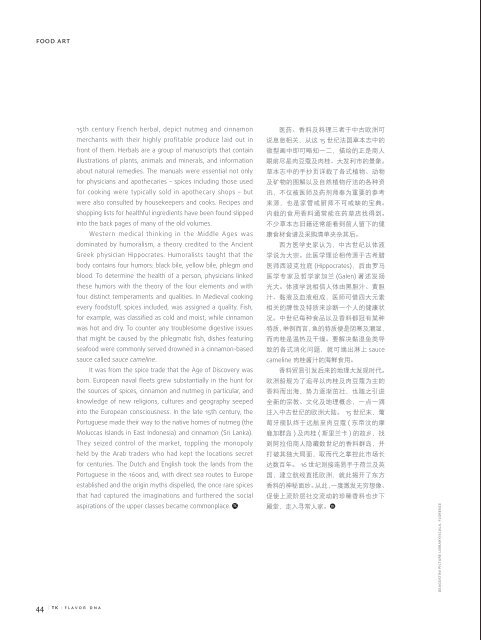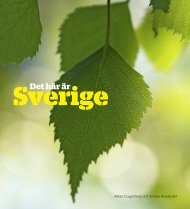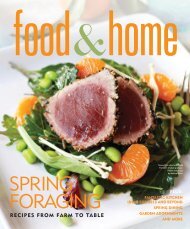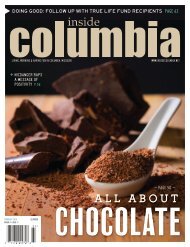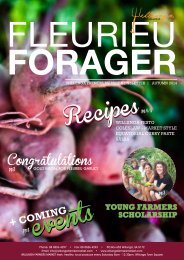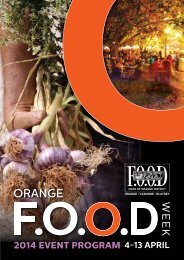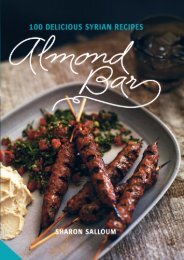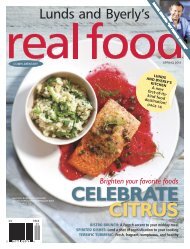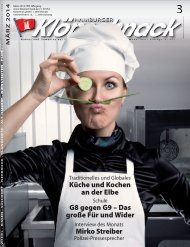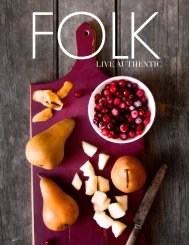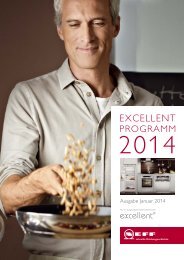Tasting Kitchen
Welcome to Tasting Kitchen. Season’s Greetings – or should I say Seasonings Greetings! This holiday TK issue is full of spices and flavorings. We talk to four talented and ambitious chefs about the flavor profile – or Flavor DNA – of dishes from India, Sichuan, Vietnam and the Isaan region of Thailand. Think cardamom, black salt and saffron, red peppercorns, red chilies and green chilies, dill, Kaffir lime, lemongrass, coriander, galangal and turmeric. We take a look at spices in history, and how even back in the Middle Ages savvy marketers knew the value of a good story. Spice merchants claimed that birds used cinnamon sticks to make giant nests in the cliffs above beaches in India, which “cinnamon hunters” then plotted to obtain. Today India is still associated with the world’s best spices. In this issue, for our first Tasting Destinations feature, TK’s Director of Photography David Hartung and Senior Writer Lucy Morgan traveled to Old Delhi to visit the world’s largest spice market and to New Delhi to visit one of the world’s top restaurants for modern Indian cuisine. One of our featured wines is the peppery Austrian Grüner Veltliner. We also talk to a New Zealand Wine Master about what makes great wine great, and to a leading French Champagne Chef de Cave about the value of patience and restraint. There are also some crabs running loose in the issue. A master chef in Macau shares his recipe for Quinoa Lobster Salad while five more from Hong Kong and Singapore share their favorite crab dishes and culinary musings. Happy Holidays,
Welcome to Tasting Kitchen.
Season’s Greetings – or should I say
Seasonings Greetings!
This holiday TK issue is full of spices and
flavorings.
We talk to four talented and ambitious
chefs about the flavor profile – or Flavor DNA
– of dishes from India, Sichuan, Vietnam and
the Isaan region of Thailand. Think cardamom,
black salt and saffron, red peppercorns, red
chilies and green chilies, dill, Kaffir lime,
lemongrass, coriander, galangal and turmeric.
We take a look at spices in history, and
how even back in the Middle Ages savvy marketers knew the value of a good story.
Spice merchants claimed that birds used cinnamon sticks to make giant nests in the
cliffs above beaches in India, which “cinnamon hunters” then plotted to obtain.
Today India is still associated with the world’s best spices. In this issue, for
our first Tasting Destinations feature, TK’s Director of Photography David Hartung
and Senior Writer Lucy Morgan traveled to Old Delhi to visit the world’s largest
spice market and to New Delhi to visit one of the world’s top restaurants for modern
Indian cuisine.
One of our featured wines is the peppery Austrian Grüner Veltliner. We also
talk to a New Zealand Wine Master about what makes great wine great, and to a
leading French Champagne Chef de Cave about the value of patience and restraint.
There are also some crabs running loose in the issue. A master chef in Macau
shares his recipe for Quinoa Lobster Salad while five more from Hong Kong and
Singapore share their favorite crab dishes and culinary musings.
Happy Holidays,
You also want an ePaper? Increase the reach of your titles
YUMPU automatically turns print PDFs into web optimized ePapers that Google loves.
food art<br />
15th century French herbal, depict nutmeg and cinnamon<br />
merchants with their highly profitable produce laid out in<br />
front of them. Herbals are a group of manuscripts that contain<br />
illustrations of plants, animals and minerals, and information<br />
about natural remedies. The manuals were essential not only<br />
for physicians and apothecaries – spices including those used<br />
for cooking were typically sold in apothecary shops – but<br />
were also consulted by housekeepers and cooks. Recipes and<br />
shopping lists for healthful ingredients have been found slipped<br />
into the back pages of many of the old volumes.<br />
Western medical thinking in the Middle Ages was<br />
dominated by humoralism, a theory credited to the Ancient<br />
Greek physician Hippocrates. Humoralists taught that the<br />
body contains four humors: black bile, yellow bile, phlegm and<br />
blood. To determine the health of a person, physicians linked<br />
these humors with the theory of the four elements and with<br />
four distinct temperaments and qualities. In Medieval cooking<br />
every foodstuff, spices included, was assigned a quality. Fish,<br />
for example, was classified as cold and moist, while cinnamon<br />
was hot and dry. To counter any troublesome digestive issues<br />
that might be caused by the phlegmatic fish, dishes featuring<br />
seafood were commonly served drowned in a cinnamon-based<br />
sauce called sauce cameline.<br />
It was from the spice trade that the Age of Discovery was<br />
born. European naval fleets grew substantially in the hunt for<br />
the sources of spices, cinnamon and nutmeg in particular, and<br />
knowledge of new religions, cultures and geography seeped<br />
into the European consciousness. In the late 15th century, the<br />
Portuguese made their way to the native homes of nutmeg (the<br />
Moluccas Islands in East Indonesia) and cinnamon (Sri Lanka).<br />
They seized control of the market, toppling the monopoly<br />
held by the Arab traders who had kept the locations secret<br />
for centuries. The Dutch and English took the lands from the<br />
Portuguese in the 1600s and, with direct sea routes to Europe<br />
established and the origin myths dispelled, the once rare spices<br />
that had captured the imaginations and furthered the social<br />
aspirations of the upper classes became commonplace.<br />
医 药 、 香 料 及 料 理 三 者 于 中 古 欧 洲 可<br />
说 息 息 相 关 , 从 这 15 世 纪 法 国 草 本 志 中 的<br />
微 型 画 中 即 可 略 知 一 二 , 描 绘 的 正 是 商 人<br />
眼 前 尽 是 肉 豆 蔻 及 肉 桂 、 大 发 利 市 的 景 象 。<br />
草 本 志 中 的 手 抄 页 详 载 了 各 式 植 物 、 动 物<br />
及 矿 物 的 图 解 以 及 自 然 植 物 疗 法 的 各 种 资<br />
讯 , 不 仅 被 医 师 及 药 剂 师 奉 为 重 要 的 参 考<br />
来 源 , 也 是 家 管 或 厨 师 不 可 或 缺 的 宝 典 。<br />
内 载 的 食 用 香 料 通 常 能 在 药 草 店 找 得 到 。<br />
不 少 草 本 志 旧 籍 还 常 能 看 到 前 人 留 下 的 健<br />
康 食 材 食 谱 及 采 购 清 单 夹 杂 其 后 。<br />
西 方 医 学 史 家 认 为 , 中 古 世 纪 以 体 液<br />
学 说 为 大 宗 。 此 医 学 理 论 相 传 源 于 古 希 腊<br />
医 师 西 波 克 拉 底 (Hippocrates), 后 由 罗 马<br />
医 学 专 家 及 哲 学 家 加 兰 (Galen) 著 述 发 扬<br />
光 大 。 体 液 学 说 相 信 人 体 由 黑 胆 汁 、 黄 胆<br />
汁 、 黏 液 及 血 液 组 成 , 医 师 可 借 四 大 元 素<br />
相 关 的 脾 性 及 特 质 来 诊 断 一 个 人 的 健 康 状<br />
况 。 中 世 纪 每 种 食 品 以 及 香 料 都 冠 有 某 种<br />
特 质 , 举 例 而 言 , 鱼 的 特 质 便 是 阴 寒 及 潮 湿 ,<br />
而 肉 桂 是 温 热 及 干 燥 。 要 解 决 黏 湿 鱼 类 导<br />
致 的 各 式 消 化 问 题 , 就 可 端 出 淋 上 sauce<br />
cameline 肉 桂 酱 汁 的 海 鲜 食 用 。<br />
香 料 贸 易 引 发 后 来 的 地 理 大 发 现 时 代 。<br />
欧 洲 船 舰 为 了 追 寻 以 肉 桂 及 肉 豆 蔻 为 主 的<br />
香 料 而 出 海 , 势 力 逐 渐 茁 壮 , 也 随 之 引 进<br />
全 新 的 宗 教 、 文 化 及 地 理 概 念 , 一 点 一 滴<br />
注 入 中 古 世 纪 的 欧 洲 大 陆 。 15 世 纪 末 , 葡<br />
萄 牙 舰 队 终 于 远 航 至 肉 豆 蔻 ( 东 帝 汶 的 摩<br />
鹿 加 群 岛 ) 及 肉 桂 ( 斯 里 兰 卡 ) 的 故 乡 , 找<br />
到 阿 拉 伯 商 人 隐 藏 数 世 纪 的 香 料 群 岛 , 并<br />
打 破 其 独 大 局 面 , 取 而 代 之 掌 控 此 市 场 长<br />
达 数 百 年 。 16 世 纪 则 接 连 易 手 于 荷 兰 及 英<br />
国 , 建 立 航 线 直 抵 欧 洲 , 就 此 揭 开 了 东 方<br />
香 料 的 神 秘 面 纱 。 从 此 , 一 度 激 发 无 穷 想 像 、<br />
促 使 上 流 阶 层 社 交 流 动 的 珍 稀 香 料 也 步 下<br />
殿 堂 , 走 入 寻 常 人 家 。<br />
DEAGOSTINI PICTURE LIBRARY/SCALA, FLORENCE<br />
44<br />
| TK | flavor dna


